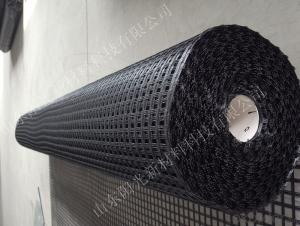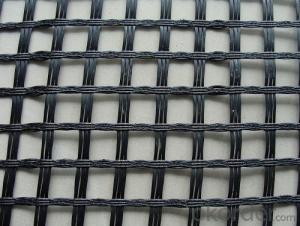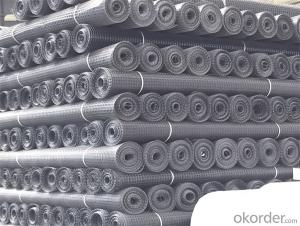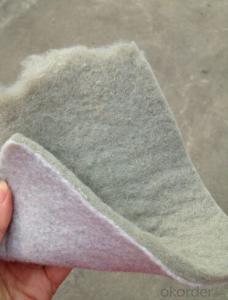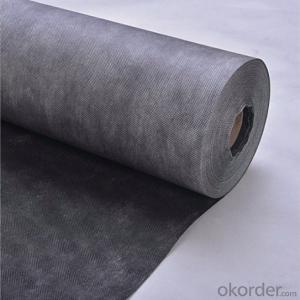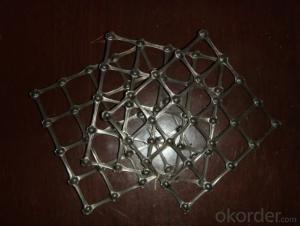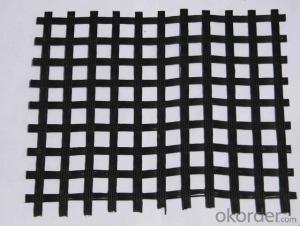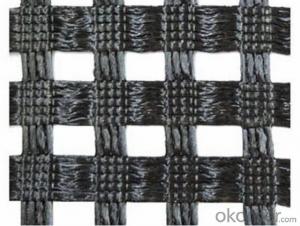Fiberglass Geogrids for Road Reinforcement
- Loading Port:
- Qingdao
- Payment Terms:
- TT or LC
- Min Order Qty:
- 10000 m²
- Supply Capability:
- 100000 m²/month
OKorder Service Pledge
OKorder Financial Service
You Might Also Like
Fiberglass Geogrid Introduction
Fiberglass geogrid is a kind of new favorable earthwork base material to strengthen the road surface and roadbed. This product is made by weaving and covering fiberglass filament. It is featured by high vertical and horizontal tensile strength, low unit extension, high flexibility, and favorable high and low temperature resistance. The products after surface covering own the favorable property of alkali resistance and aging resistance
Fiberglass Geogrid Features :
1. Fiberglass geogrid for soil reinforcement
2. Pavement subgrade stabilization
3. Area /Ground stabilization
4. Pavement base reinforcement
5. Working & load transfer platforms
6. Rail Track-bed stabilization
7. Reinforced granular foundation beds
Fiberglass Geogrid Specification:
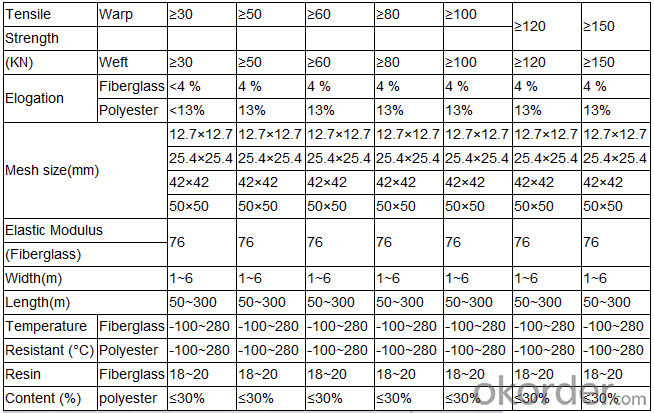
FAQ:
Q: What kind of payments does jenor support?
A: T/T, L/C, Cash are accepted.
Q: Do you charge for the samples?
A: Accordeing to our company policy, the samples are freee, we only charge the freight fee. And we will return the freight fee during the next order.
Q: Can you produce according to customers' design?
A: Sure, we are professional manufacturer, OEM and ODM are both welcome.
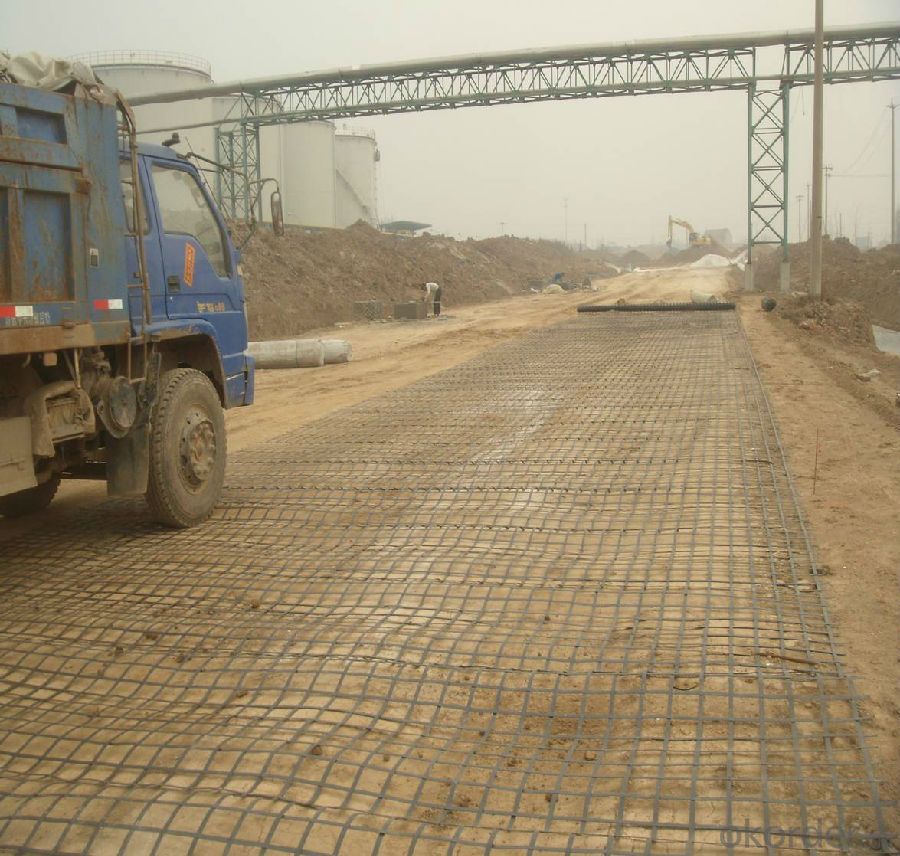
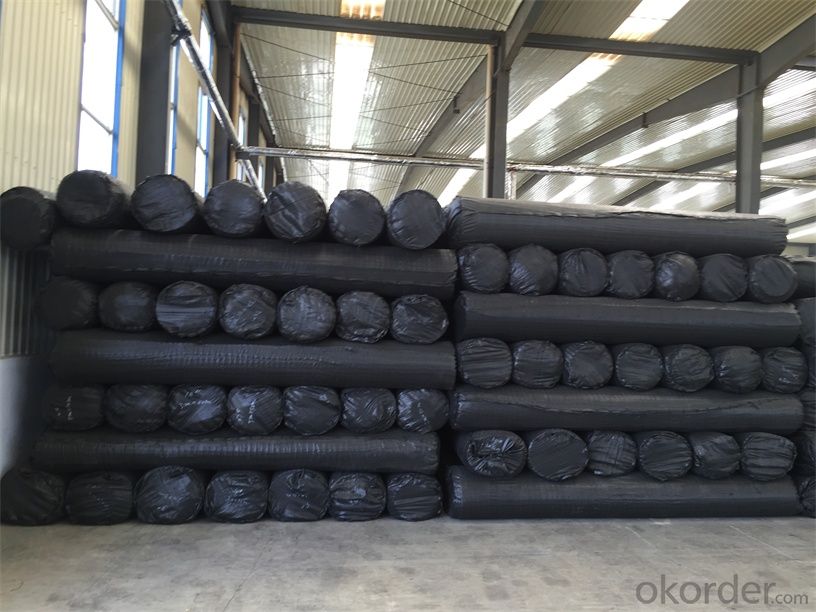
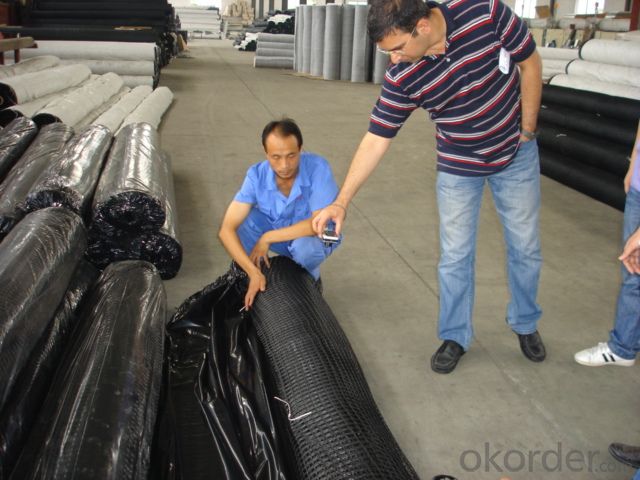
- Q:Do geogrids enhance the stability of mechanically stabilized earth walls?
- Yes, geogrids do enhance the stability of mechanically stabilized earth walls. Geogrids are commonly used in the construction of these walls to improve their structural integrity and prevent potential failure. They provide reinforcement by acting as tensile elements, distributing external forces, and increasing the overall strength of the wall system. Geogrids effectively resist lateral earth pressures, reduce wall deformations, and enhance the overall stability and longevity of mechanically stabilized earth walls.
- Q:Can geogrids be used in reinforcement of bridge abutments and wing walls?
- Yes, geogrids can be used in the reinforcement of bridge abutments and wing walls. Geogrids are high-strength synthetic materials that can improve the stability and load-bearing capacity of soil structures. In the case of bridge abutments and wing walls, geogrids can be installed to provide additional reinforcement, reducing the potential for settlement and enhancing the overall performance and longevity of the structure.
- Q:What is the recommended geogrid aperture shape for specific applications?
- The recommended geogrid aperture shape for specific applications varies depending on the specific requirements of the project. However, commonly used shapes include square, rectangular, and hexagonal apertures. These shapes provide different levels of stability, soil confinement, and load distribution, allowing engineers to select the most suitable option based on factors such as soil type, slope angle, and anticipated loads.
- Q:Can geogrids be used in mining and geotechnical applications?
- Yes, geogrids can be used in both mining and geotechnical applications. Geogrids are commonly used in mining to reinforce soil and rock slopes, stabilize excavations, and provide support for haul roads and mine walls. In geotechnical applications, geogrids are used to reinforce soils, increase slope stability, and improve the performance of retaining walls, embankments, and foundations.
- Q:Can geogrids be used in reinforcement of underground utility corridors?
- Yes, geogrids can be used in the reinforcement of underground utility corridors. Geogrids are commonly used in civil engineering applications to provide strength and stability to soil, including underground structures such as utility corridors. They are effective in distributing load and preventing soil movement, enhancing the overall performance and durability of the underground utility corridors.
- Q:Can geogrids be used in retaining walls for waterfront parks?
- Yes, geogrids can be used in retaining walls for waterfront parks. Geogrids provide reinforcement and stability to the soil, preventing erosion and maintaining the integrity of the retaining wall. They are commonly used in such applications to enhance the strength and durability of retaining walls in waterfront parks.
- Q:What are the limitations of using geogrids?
- Some limitations of using geogrids include their high initial cost, potential for damage during installation, limited effectiveness in certain soil conditions, and the need for proper maintenance and monitoring to ensure long-term performance. Additionally, geogrids may not be suitable for all applications and may require technical expertise for proper design and installation.
- Q:How to determine the number of geogrid detection method
- What are the geogrid testing items1) place: in the surface layer of 50cm thick sand gravel or sand (egg) gravel cushion, and compaction, which is not only conducive to improve the friction between the soil and the grid, but also conducive to the consolidation of the foundation drainage.
- Q:How do geogrids improve the performance of geocell-reinforced embankments?
- Geogrids improve the performance of geocell-reinforced embankments by providing additional tensile strength and stability to the structure. They enhance the load-bearing capacity of the embankment, preventing lateral spreading and soil erosion. Geogrids also distribute the applied loads more evenly, reducing the stress on the geocell walls and maintaining the integrity of the structure. Overall, geogrids enhance the overall performance, longevity, and safety of geocell-reinforced embankments.
- Q:How is the strength of a geogrid determined?
- The strength of a geogrid is determined through various laboratory tests and calculations that evaluate its tensile strength, creep resistance, and other mechanical properties. These tests involve applying force to the geogrid in different directions to measure its ability to withstand pulling, stretching, or shear forces. The results of these tests help determine the geogrid's strength and its suitability for specific applications in civil engineering and soil stabilization projects.
1. Manufacturer Overview |
|
|---|---|
| Location | |
| Year Established | |
| Annual Output Value | |
| Main Markets | |
| Company Certifications | |
2. Manufacturer Certificates |
|
|---|---|
| a) Certification Name | |
| Range | |
| Reference | |
| Validity Period | |
3. Manufacturer Capability |
|
|---|---|
| a)Trade Capacity | |
| Nearest Port | |
| Export Percentage | |
| No.of Employees in Trade Department | |
| Language Spoken: | |
| b)Factory Information | |
| Factory Size: | |
| No. of Production Lines | |
| Contract Manufacturing | |
| Product Price Range | |
Send your message to us
Fiberglass Geogrids for Road Reinforcement
- Loading Port:
- Qingdao
- Payment Terms:
- TT or LC
- Min Order Qty:
- 10000 m²
- Supply Capability:
- 100000 m²/month
OKorder Service Pledge
OKorder Financial Service
Similar products
New products
Hot products
Hot Searches
Related keywords

